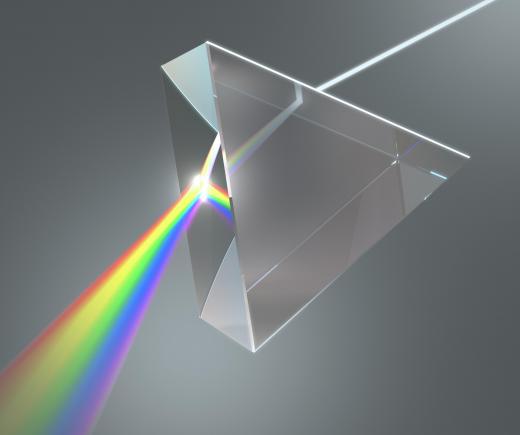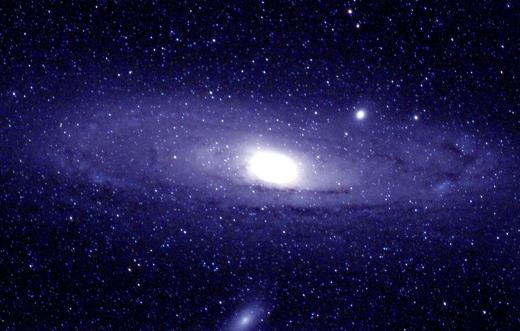What is Spectroscopy?
Spectroscopy is the study of light as it breaks into its constituent colors. By examining these different colors, one can determine any number of properties of the object being studied, as the colors of the light reflect the energy states. More technically, spectroscopy looks at the interaction between any matter and radiation. It is used to analyze compounds in chemistry, to determine what different elements make up something, and is also used in astronomy to get insight into both the composition and velocities of astronomical bodies.
One can divide spectroscopy into many sub-disciplines, depending on what is being measured, and how it is being measured. Some major divisions include mass spectrometry, electron spectroscopy, absorption spectroscopy, emission spectroscopy, x-ray spectroscopy, and electromagnetic spectroscopy. There are many other types of spectroscopy as well, however, including those that look at sound as it scatters, or electrical fields.

In x-ray spectroscopy, for example, x-rays bombard a substance. When they hit it, the electrons in the inner shells of the atoms are excited, and then de-excite, emitting radiation. This radiation comes out at different frequencies, depending on the atom, and there are slight variations depending on the chemical bonds present. This means that the radiation can be examined to determine what elements are present, in what quantities, and what chemical bonds exist.

In astronomy, spectroscopy can be used to determine a wide range of things about the composition of stars and other celestial bodies. This is because light is a wave, and different energies have different wavelengths. These different wavelengths correlate to different colors, which can be observed using telescopes. Spectroscopy involves looking at the different colors, and using what is known about the energies of different processes and elements to build a map of what is happening thousands of millions of light years away.

There are two main spectra of light that are looked at in astronomical spectroscopy: continuous and discrete. A continuous spectrum has a wide range of colors that are relatively continuous. A discrete spectrum, on the other hand, has certain spikes of very bright or very dark lines at specific energies. Discrete spectra that have bright spikes are called emission spectra, while those that have dark spikes are called absorption spectra.

The continuous spectra are emitted by things like stars, as well as things on earth like fires, animals, or light bulbs. Because energy is being released across the spectrum of wavelengths, it appears rather continuous, although there may be peaks and troughs within the spectrum. Not all of this light, of course, is visible to the naked eye, much of it exists in the infrared or ultraviolet range.
Discrete spectra, on the other hand, usually are caused by something happening by a particular atom. This is because, due to certain rules of quantum mechanics, electron clouds have a very specific energy, depending on the associated atom. Every single element has only a handful of energy levels it can have, and nearly all of them are easily identifiable. At the same time, these elements always want to return to these basic energy levels, so if they get excited in some way, they emit the extra energy as light. That light has the exact wavelength one would expect for that atom, allowing astronomers to view the light peak and recognize what atoms are involved, helping to unlock the secrets of the composition of the universe.
AS FEATURED ON:
AS FEATURED ON:














Discuss this Article
Post your comments